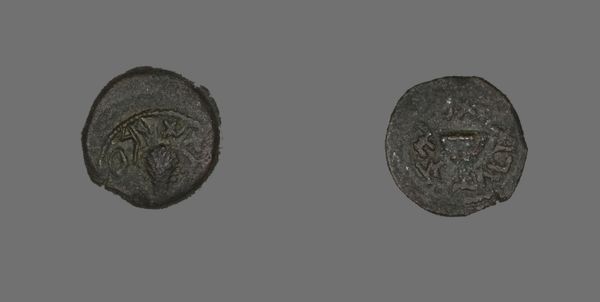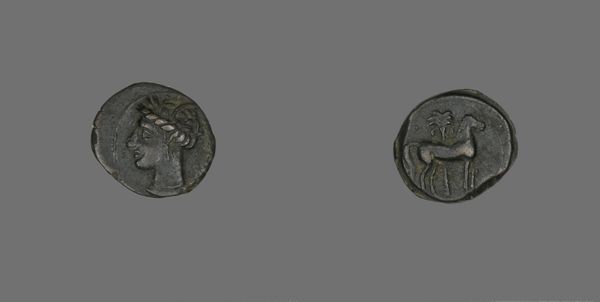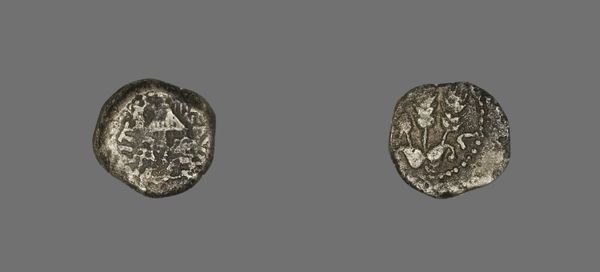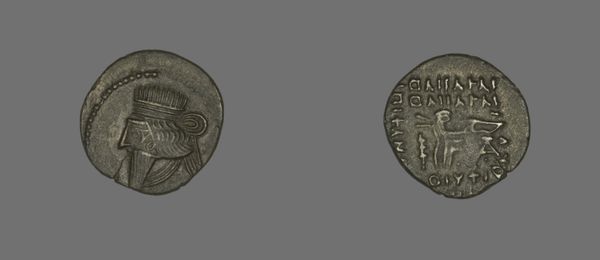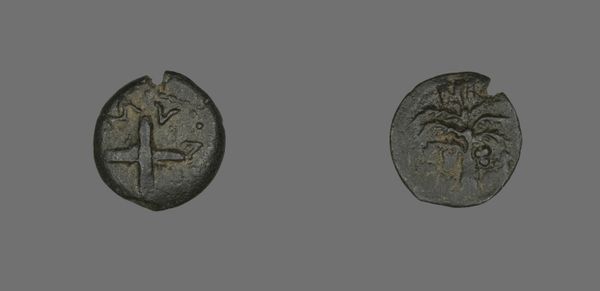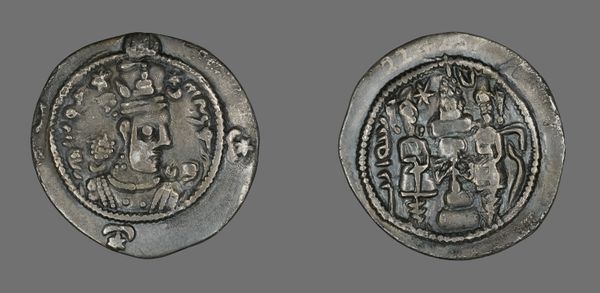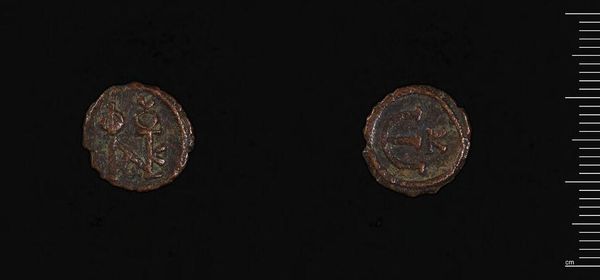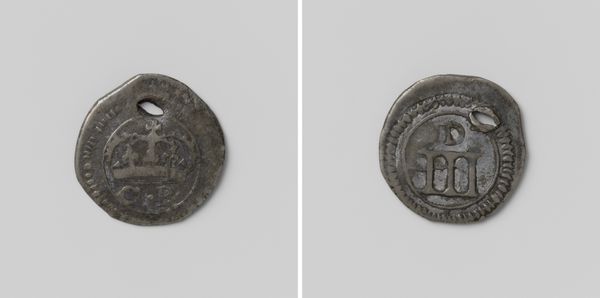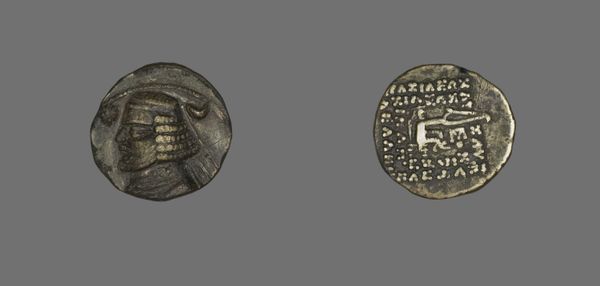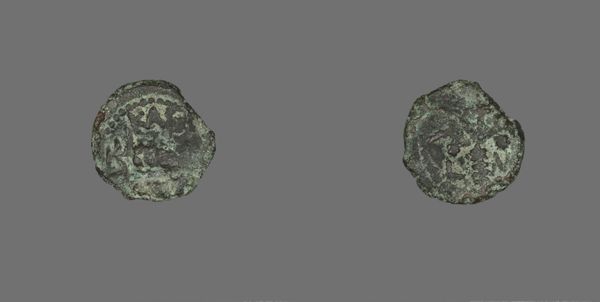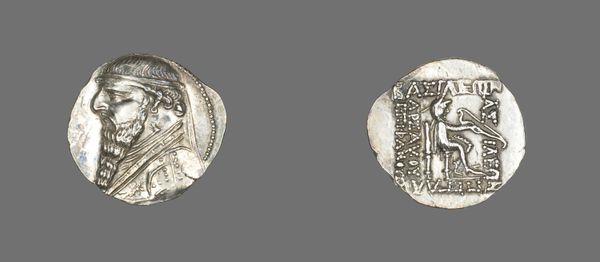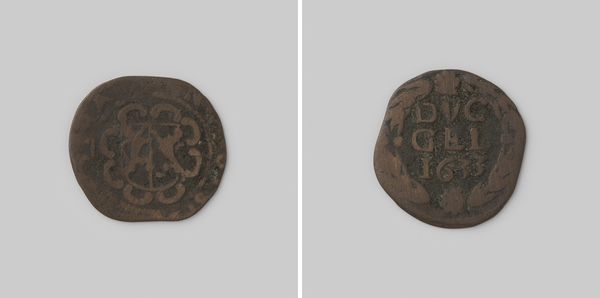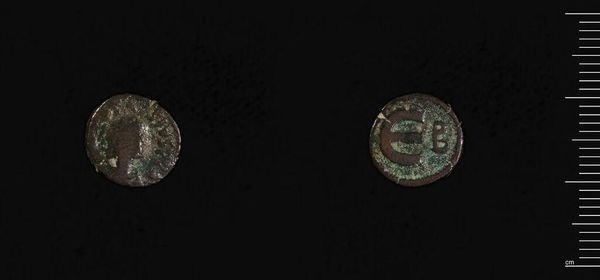
bronze
#
portrait
#
greek-and-roman-art
#
bronze
#
ancient-mediterranean
#
coin
#
miniature
Dimensions: Diam. 1.6 cm; 2.44 g
Copyright: Public Domain
Curator: Before us, we have a bronze coin from Judea, dating from around 30 to 31 AD. The artwork is called "Coin Depicting an Olive Wreath," currently held at The Art Institute of Chicago. Editor: My first impression is the weight of antiquity. It's small, clearly aged, and whispers stories of a distant time. Curator: Absolutely. Coins like these offer an intriguing lens into the intersectional dynamics of power, economy, and cultural identity during the Roman occupation of Judea. The imagery chosen and the messages conveyed, albeit miniature, are deliberate political statements. Editor: And the olive wreath! Such a potent symbol. It’s carried meanings of peace, victory, and even resurrection across centuries. Think about how it would be perceived—not just politically, but also spiritually and personally—by the people who handled it every day. Curator: Exactly! The very choice of an olive wreath, versus, say, a portrait of the emperor, implies a subtle form of resistance and the enduring hope of the Judean people during a period marked by colonial oppression. It signifies autonomy despite occupation. Editor: There’s a continuity, a memory embedded in the iconography itself. These symbols weren’t created in a vacuum; they resonated with a history and collective unconscious. The person holding it might have remembered previous times of peace or prosperity, connecting present-day realities to distant times. Curator: Right. Considering the sociopolitical implications, its purpose extends far beyond just currency; it operates as a form of symbolic currency, influencing beliefs. That shifts my reading towards something very powerful, speaking truth to Roman authority. Editor: A silent assertion of identity—it’s amazing what power lies in a small bronze circle. Curator: It truly speaks to the capacity of a marginalized people to use symbolism and art as acts of defiance. Editor: These considerations give such gravity to what would appear at first glance just to be an insignificant material possession. Curator: Precisely. That interplay between object and broader social meaning always offers fascinating ground for inquiry.
Comments
No comments
Be the first to comment and join the conversation on the ultimate creative platform.
